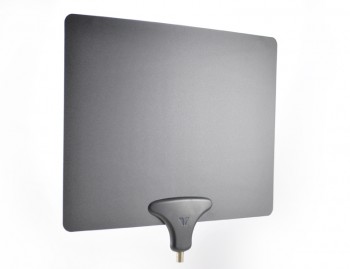Mark Buff’s entrepreneurial urge emerged in childhood. “I was always curious, the kind of kid who builds things and tries to sell them,” he recalls. One early venture included customizing wooden plaques for neighbors and family with a woodworking set. Another was a new kind of snorkel; with parental help, he submitted his plans to the US Patent Office—where they were rejected. But Buff’s curiosity persevered, and decades later he emerged as founder and president of GreenWave Scientific and Mohu, producers of sophisticated antenna systems for the military and consumer markets.
Buff’s real journey began with his enrollment at North Carolina State University (NCSU), where he studied electrical engineering. After graduation, he quickly found employment with a large telecommunications firm, until the bubble burst. “I was laid off, along with most of the other employees,” Buff says. “The company went from 2,000 workers to about 150.”
A year later, Buff returned to NCSU. At first, he was attracted to ASIC (application-specific integrated circuit) design. “I knew people who designed these chips, and I was fascinated by them,” he says. “But when I took my first class, I realized the process centered mostly on driving a developmental tool, rather than on actual physics-based engineering. And that wasn’t what I wanted.”
Buff eventually honed in on radio-frequency (RF) design for wireless applications. After completing several related courses, he discussed the possibility of pursuing a PhD in the field with Michael Steer, a distinguished professor of microwave engineering at NCSU. Steer agreed, and took Buff on as one of his research assistants. “The timing was just right,” Buff recalls. “This was in 2002, and there were plenty of opportunities for military research. Although the majority of [Steer’s] assistants were not US citizens, I was—so NCSU could get funding for some government programs.”
The situation worked out well for Buff, too. He spent some time at the Navy’s Explosive Ordnance Disposal Technology Division at Indian Head, Maryland. His work there involved the reverse-engineering of IEDs (improvised explosive devices) from Iraq, and creating procedures to identify and disarm them. His concentration on the radar-based detection of antennas used in command-wire IEDs became the underpinning of his PhD thesis. “We started from scratch on that work, and we had to design and build what we needed,” he says. In Buff’s case, it was antennas made from scrap aluminum.
But beyond the work for his PhD, Buff also enrolled in several elective business courses, which “gave me the bug for business,” he says. “I could see how my tech knowledge could be applied in the real world.”
In fact, Buff founded his first company, the predecessor to GreenWave Scientific, while still in school, and his first big win was a carryover from his research. “With the proliferation of IEDs, all ground vehicles carried equipment that was designed to mitigate and defeat various types of improvised explosive devices,” he says.
But those countermeasures brought their own problems: the proliferation of antennas (for communications and electronic warfare) made the vehicle look like a porcupine and announced it as a key target. “The Navy expressed interest in minimizing the visual signature of various ground-vehicle antenna systems and accepted my proposal to develop a low-/no-profile antenna.”

Buff and his team developed a distributed antenna system, mounted at the vehicle’s corners. By feeding them in parallel, operators could practically replicate the coverage afforded by standard masts without alerting the enemy of their presence. The group also developed a mud-flap antenna, a flexible printed circuit board sandwiched between sheets of rubber, for similar applications and other related products.
But military contracting can be feast-or-famine, so with GreenWave running smoothly, Buff established Mohu as a way to leverage its knowledge and experience for the more-reliable consumer market. “We had read an article about a trend toward dropping cable TV in favor of over-the-air reception, and that inspired us,” Buff says.
After analyzing many high-definition TV antennas, the team set out to improve upon them, basing their design on Green-wave’s mud-flap military antenna. The result was the paper-thin Mohu Leaf, the industry’s first flat and flexible HDTV antenna. Replacing unsightly “rabbit ears,” the Leaf can be mounted behind a bookcase or picture and still provide high-quality reception.
Within three months of the launch in the Amazon marketplace, the Mohu Leaf became the number one selling HDTV antenna on Amazon and has dominated the e-commerce market ever since. The first amplified version of the Leaf, the Leaf Plus, was named by Yahoo/CNBC as a “Top 10 Gadget of 2012,” alongside the Kindle and iPhone 5. In October 2012, the Leaf was picked up by Sam’s Club, and is scheduled to soon appear in Wal-Mart stores nationwide.
Moreover, Mohu isn’t standing still. Its expanding product line includes an amplified version of the Leaf; the Sky antenna, its first unit for outdoor use; and “other products I can’t talk about yet,” Buff chuckles.
While GreenWave still engages in military work, Mohu’s consumer business has really paid off. The companies now employ 60 people—in such diverse activities as graphic design, sales, operations, and other key functions—and are housed in 24,000 square feet of floor space, 12 times the size of the original facility. And Buff is clear about the key to the company’s success. “It’s simple,” he says. “We just keep building products that are better than our competitors.”















